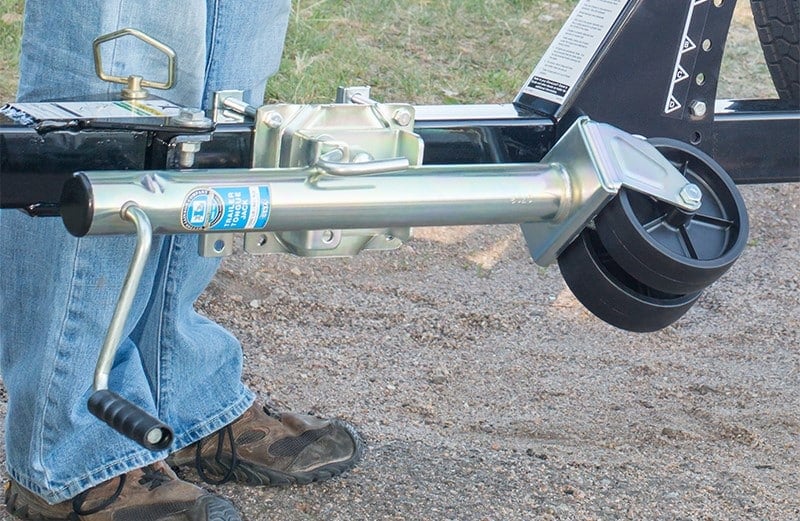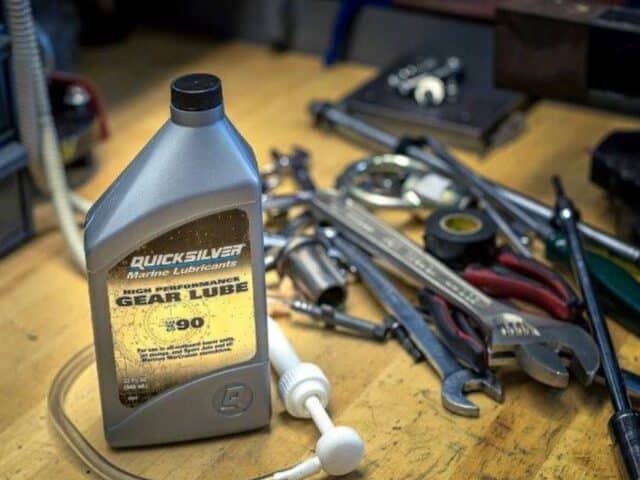A boat trailer jack is a very important piece of equipment. It’s responsible for lifting the trailer on and off the hitch ball when coupling and uncoupling your trailer. It’s a vital component that must be in working order to hit the water and enjoy your favorite watersports.
Unfortunately, it takes a lot of abuse, so you’ll need to ensure you stay on top of maintenance, or you’ll be left with the cost of replacing your boat trailer jack. In this article, we’ll review everything you need to know about boat trailer tongue jacks, from all the different features to our best options for replacement.
Most Common Trailer Tongue Jack
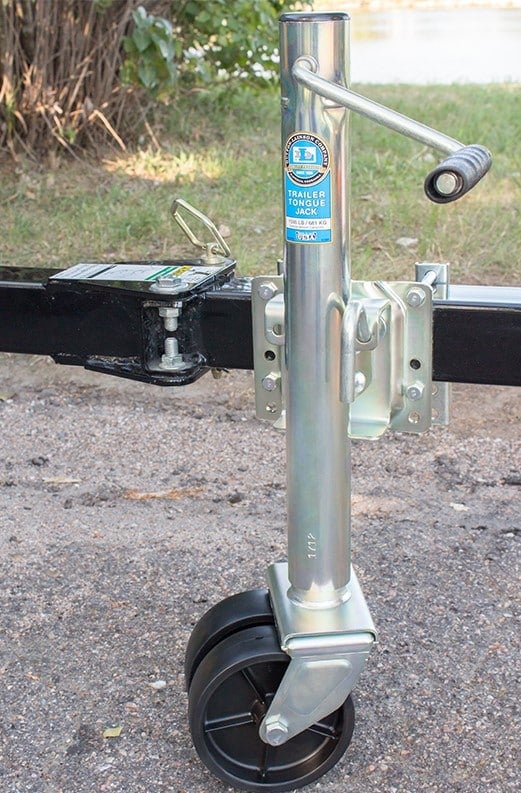
The most common type of boat trailer jack is a side-mount. This jack is mounted directly to the side of the trailer tongue via a bracket. The bracket is usually welded but can also be bolted on. The jack rotates up and away from the ground during travel to increase ground clearance.
How To Use A Boat Trailer Tongue Jack
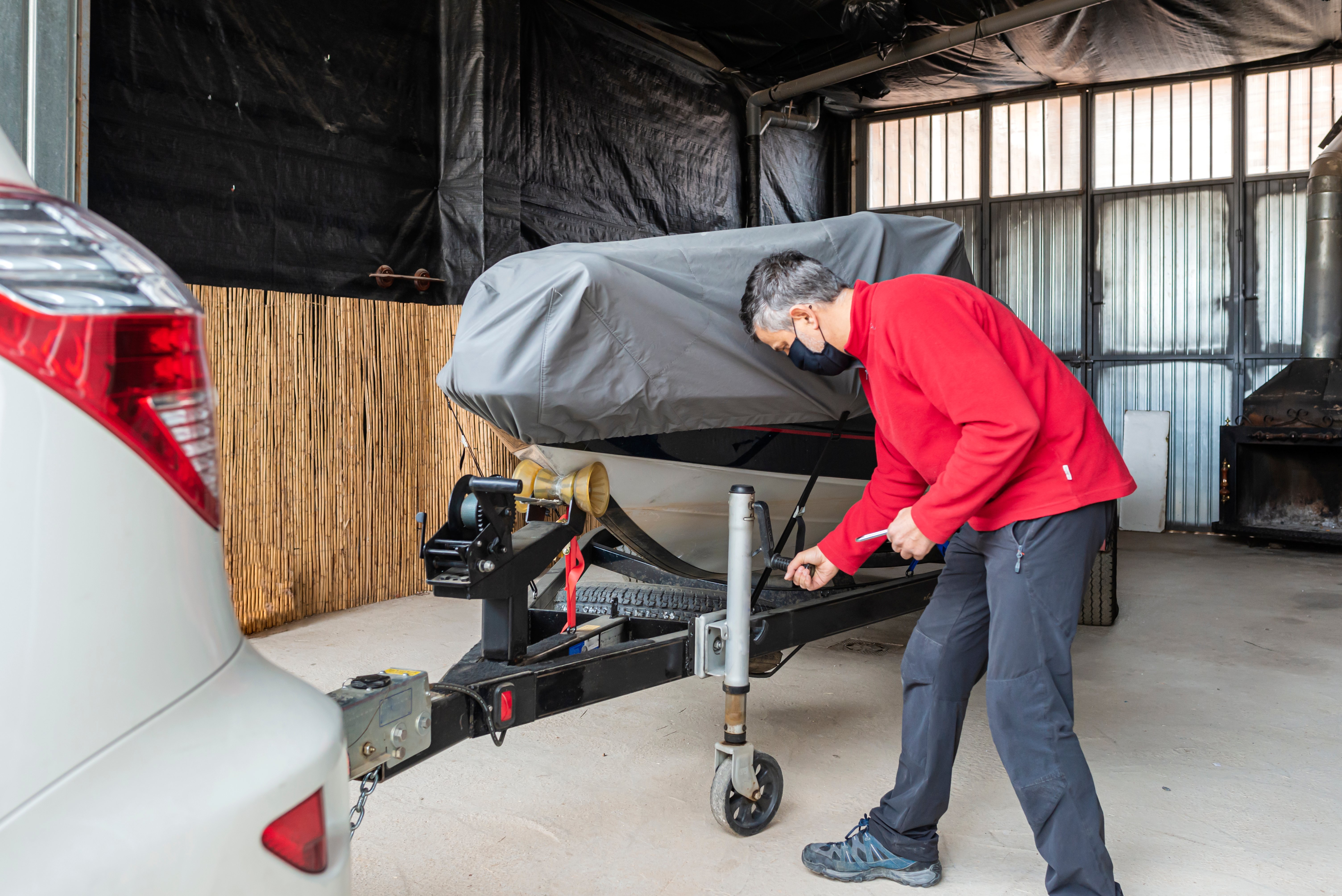
Boat trailer jacks are very easy to operate. They use a simple hand crank mechanism for raising and lowering. Turning the handle clockwise raises the jack, and turning the handle counterclockwise lowers it. Manual tongue jacks can be either side-wind (handle on the side) or top-wind (handle on the top).
How To Pick Out the Right Boat Trailer Jack
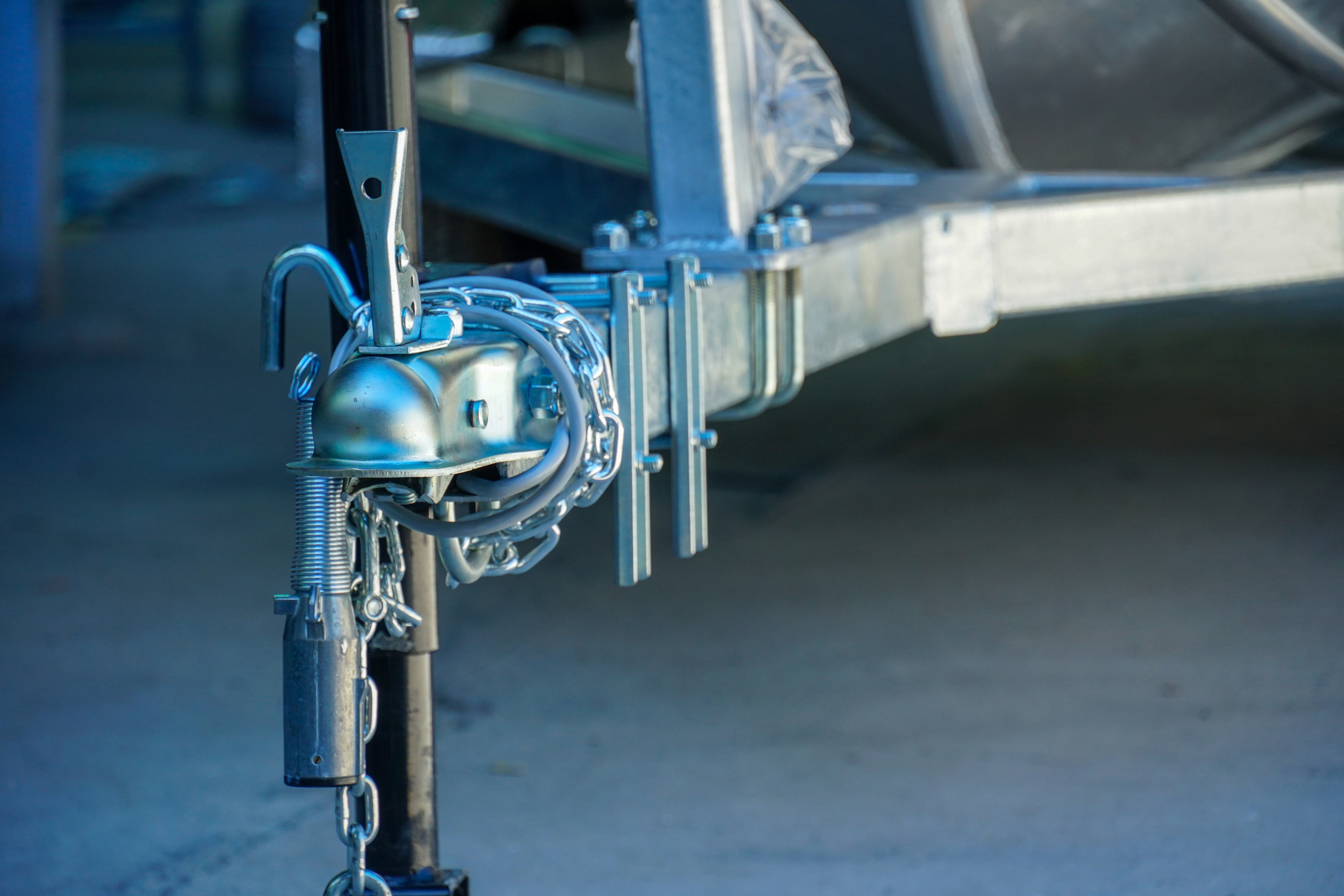
There are many considerations when picking out the correct tongue jack for your trailer. Review the details below to ensure you get the correct jack the first time.
Capacity
A big misconception about trailer tongue jacks is that they must be rated for the trailer’s gross weight, and that’s not necessarily true.
For example, if a tongue jack is rated for 2,000 lbs., the trailer’s tongue weight cannot exceed this, but the trailer’s gross weight can. Let’s say you have a boat and trailer that weigh around 3,500 lbs. fully loaded. The tongue weight of this trailer is likely to be around 450 lbs., which is well within the limit of a 2,000-lb. jack. Therefore, a 2,000-lb. trailer jack will be a great match for a 3,500-lb. boat and trailer.
Travel
The travel or lift of a jack determines how high it can rise and lower. Choosing the right amount is important since getting it wrong could render it useless. This is why we recommend matching or exceeding what came with the trailer. Lift or travel is measured from the center of the mounting point to the bottom of the jack’s inner tube.
Handle Orientation
The crank handle location can be on the side or top. This only matters when objects on the trailer frame could interfere with operation. Therefore, you’ll need to check these before ordering. It’s best to stick with your current style to avoid any issues. If there are no obstructions, choose whichever is most comfortable for you.
Mounting
There are two options for mounting: weld-on and bolt-on. The weld-on options consist of a plate or pipe mount, and the bolt-on simply uses u-bolts or channel brackets with bolts to wrap around the frame rail.
Features
Most side-mount jacks contain a swivel feature that lets you rotate the jack up and out of the way for travel. However, the way this swivel feature is activated varies by model. Some use a convenient spring-loaded pull pin, whereas others use a more traditional pin and clip.
Accessories
Some jacks have certain accessories that provide additional features. The most common are as follows:
A wheel provides easier mobility.
A drill adapter allows faster operation.
A large foot pad prevents the jack tube from sinking into soft ground.
How To Install a Trailer Tongue Jack
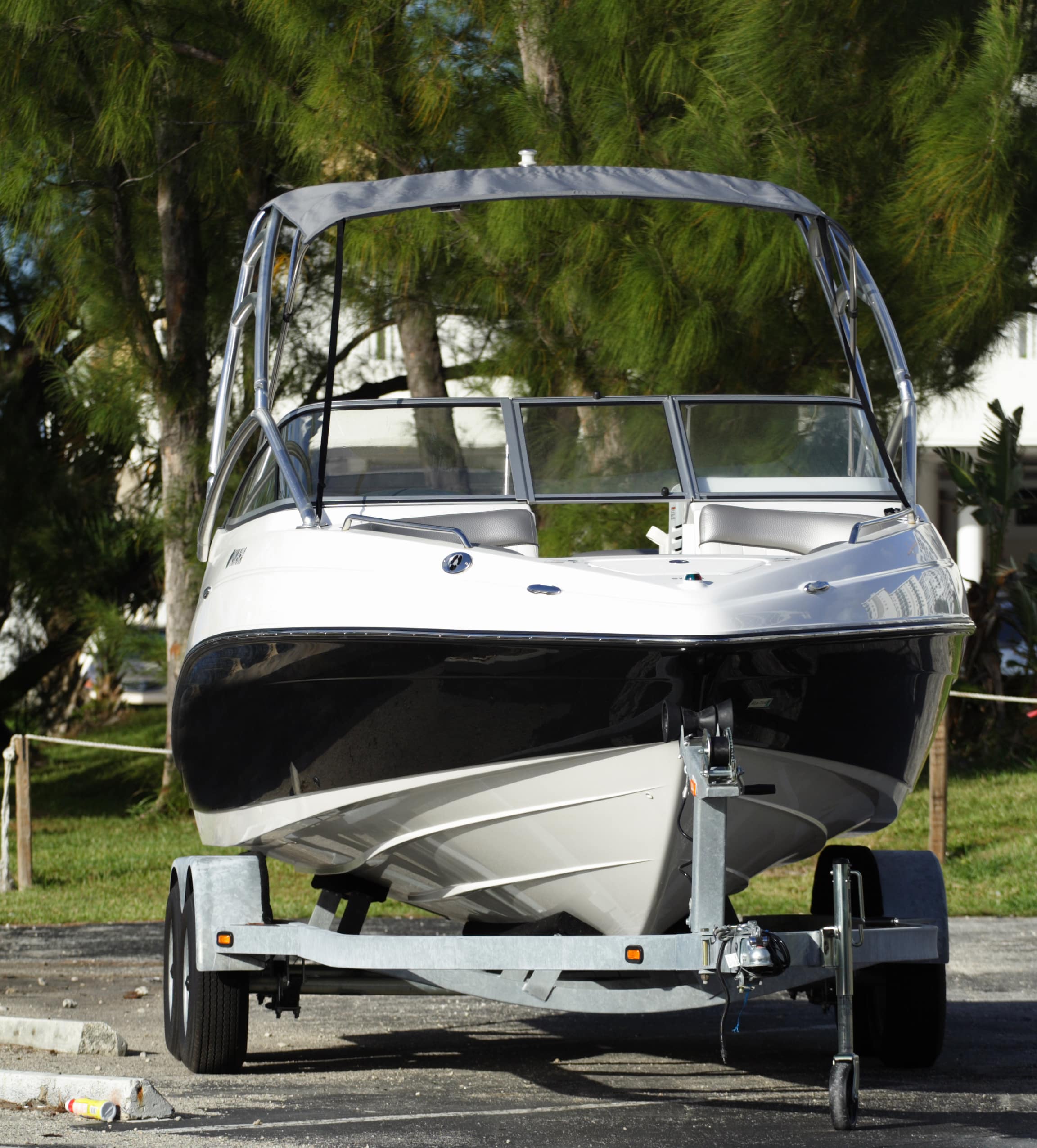
Most OEM trailer tongue jacks mount to a welded-on bracket. If it’s a pipe-mount, you’ll simply need to choose another pipe mount jack with the same diameter. However, if it’s a plate mount, specific to a particular jack, you’ll need to remove it unless you can find another jack that fits, which is rare.
A welded-on bracket can be bypassed by using a bolt-on jack. You can leave the existing frame bracket in place or remove it. Simply bolt your new jack onto the frame with the included hardware.
Best Trailer Tongue Jacks for a Boat Trailer
Now, let’s look at some great tongue jack options for your trailer.
Best Light-Duty Boat Trailer Jack
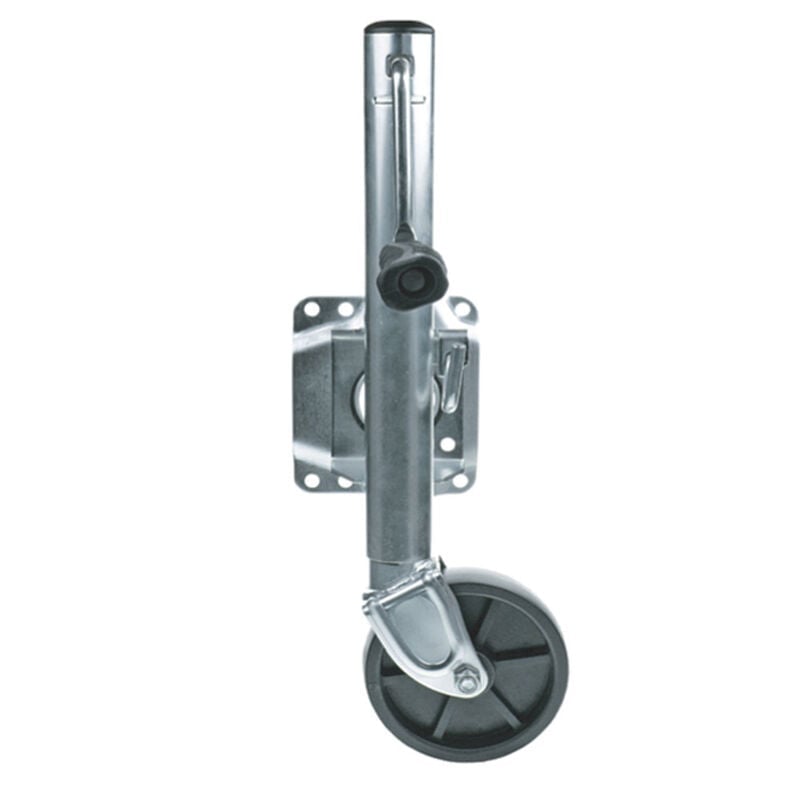
The Overton’s Economy 1000-lb. Trailer Jack is a great option for those on a budget with a lightweight trailer. It has built-in grease fittings, making for easy maintenance and worry-free operation.
| Capacity (Lbs.) | Mounting | Lift | Accessory |
| 1,000 | Bolt-On | 10” | Single Wheel |
Best Medium-Duty Boat Trailer Jack
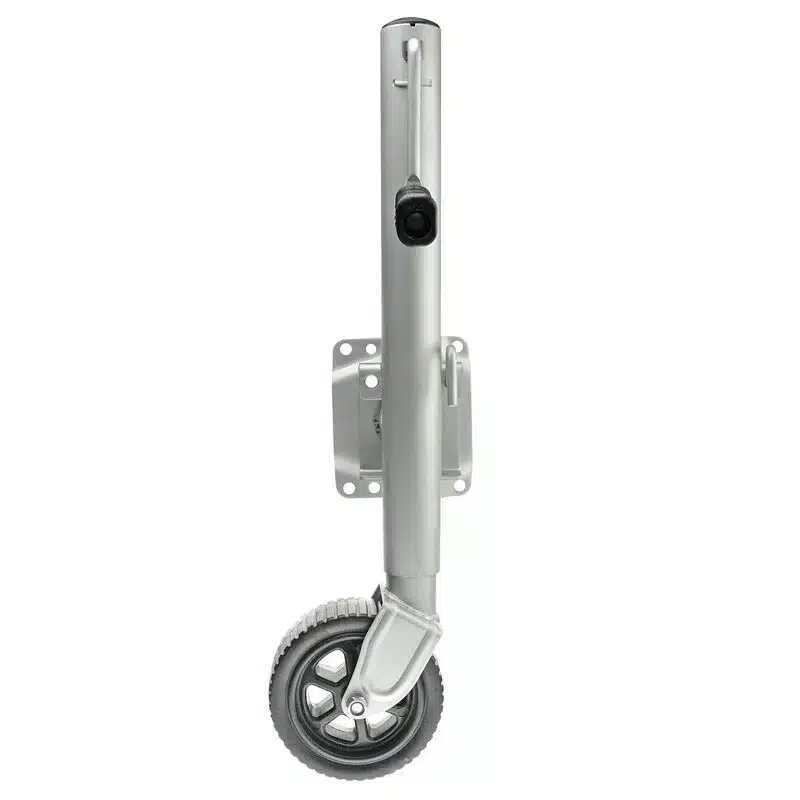
The Overton’s 1200-lb. Trailer Jack is a nice step-up from the economy model. It has a slightly higher capacity and more travel. It also features an ergonomic rubber handle for more comfort.
| Capacity (Lbs.) | Mounting | Lift | Accessory |
| 1,200 | Bolt-On | 11.5” | Single Wheel |
Best Heavy-Duty Boat Trailer Jack
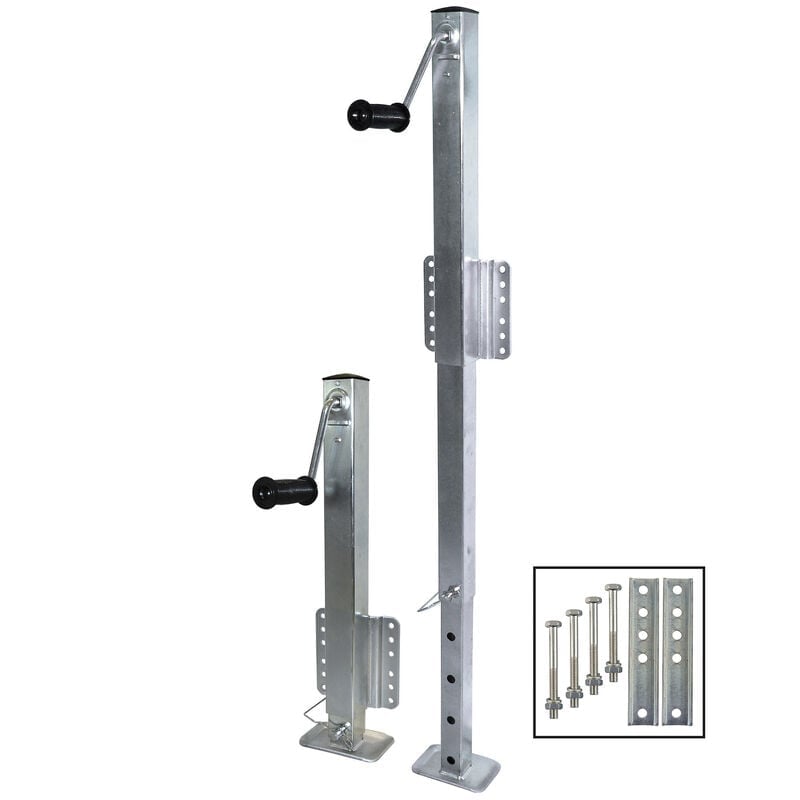
If you have a large boat and trailer, you might want to consider the Overton’s Square Tube Fixed-Mount Trailer Jack. This heavy-duty jack with drop leg makes for fast and easy operation.
| Capacity (Lbs.) | Mounting | Lift | Accessory |
| 2,500 | Bolt-On | 30” | Square Foot |
Whether you’re looking for a new tongue jack or to understand them better, we hope you found this article helpful. Be sure to look at some of our other trailering articles below.
- What You Need to Know About Replacing Boat Trailer Lights
- Everything You Need to Know About Towing a Boat Trailer
Let us know in the comments below if you’ve ever replaced your trailer tongue jack and how it went.

